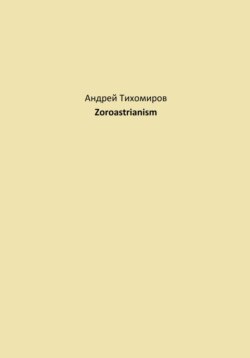Zoroastrianism is a religion that originated on the territory of the Southern Urals in the so—called Vars, where future Indo-Europeans "cooked" metal. The characteristic features of this religion were: the idea of the struggle in the world of two principles – good and evil, the veneration of fire, the condemnation of mass blood sacrifices, the prohibition of the burial of corpses (they were given to animals to eat). Zoroastrianism is characterized by the teaching about the end of the world, about the afterlife, about the resurrection of the dead, about the coming savior born of a virgin, and the last judgment, which influenced Vedism – Brahmanism – Hinduism, Buddhism, Judaism, Christianity and Islam.
All religions are a way to answer all the questions of existence at once – with the help of a fictional figure of god, which meant the environment, rivers, the sky, the plant and animal world, and subsequently the human priest-hypnotist himself. Religions, as Karl Marx noted, are a spiritual drug used by the ruling classes to retain their power. "Religious squalor is at the same time an expression of real squalor and a protest against this real squalor. Religion is the sigh of an oppressed creature, the heart of a heartless world, just as it is the spirit of soulless orders. Religion is the opium of the people." Marx used this expression in the introduction to the work "A critique of Hegel's Philosophy of Law", written in 1843 and published in 1844 in the "German-French Yearbook".
The creation of this religion is attributed by tradition to the prophet Zarathustra, whose name was transmitted by ancient Greek authors as "Zoroaster" (hence the name of the religion).
There is such information. Thirty-year-old Zarathustra went to the river bank to get water for the preparation of haoma (an alcoholic drink, Haoma originates in the Indo-Iranian religion and is an analogue of the Vedic soma). The river was called Aevatak, that is, "Flowing alone" (from the ancient Avestan language). Apparently, its shores were deserted, and no one's immodest gaze could interfere with the solitude of the righteous and his fateful epiphany.
On the shoal Zarathustra moved away from the shore, to where the water was most transparent… In many religions and mythologies, it is with water that the ideas of great insights are associated.
…And suddenly, standing in the water, Zarathustra, to his amazement, saw a man approaching him in this deserted place.
The stranger looked strange: his majestic appearance betrayed him as a celestial. He was unusually tall (three spears tall), beautiful and radiant.
It was Boxy Mana himself—a Good Thought -one of the Immortal Saints. And he conducted the righteous Zarathustra to the rest of the Amesh Spenta. The light from them was such that a person "did not see his own shadow on the ground." Or maybe the event took place at noon and the sun was at its zenith?
This synclite was headed by Ahura Mazda himself. However, the mortal was allowed to sit down: a place had been prepared for him in advance. And Zarathustra began to ask about the most important things – no longer from people, but from the Creator himself:
Ahura Mazda asked
Spitama Zarathustra:
"Tell me, Holy Spirit,
The Creator of carnal life,
What of the Holy Word
And the most powerful,
And the most victorious,
And the most gracious,
What is most effective?
And the Good Spirit revealed to him many of his names: Questionable, Desired, Powerful, Truth, All-Encompassing Goodness, Reason and Reasonable, Teaching and Scientist, Holiness and Saint, the Strongest, Without Malice, Victorious, All—melting and All-seeing, Healer, Creator, Patron, Guardian…




